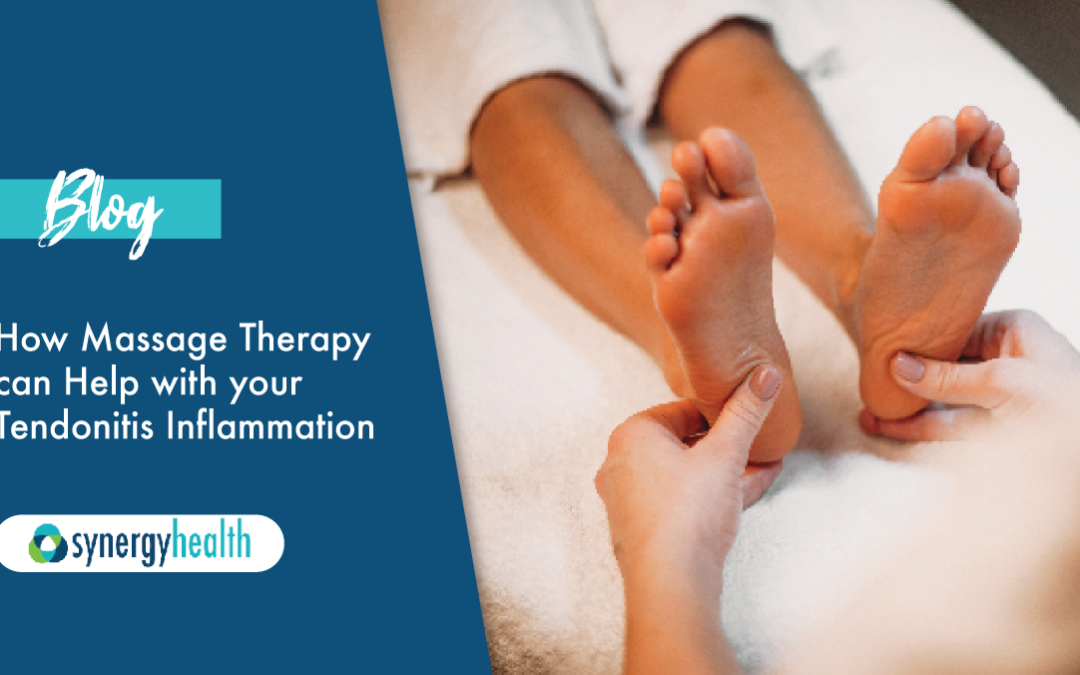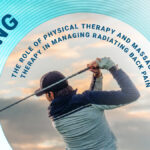Did you know that tendonitis affects between 2-and 5% of the general population? Tendonitis can adversely affect one’s day-to-day life if left untreated, with over 70,000 people reporting that the condition keeps them from participating in daily activities and work responsibilities. So, what causes tendonitis, why is it difficult to heal, and how might Synergy Naples’ therapeutic massage be the answer?
What is Tendonitis and How Does it Occur?
Tendonitis is a condition in which the tendon – the tissue connecting muscle to bone – becomes inflamed, causing increased pain and decreased mobility. Tendons are designed to withstand specific movements such as bending, stretching and twisting. However, they can become inflamed from traumatic injuries and repetitive movements that leave them with torn fibers or scar tissue. While anyone can get tendonitis, it is more common in those over the age of 40, as the body produces less lubricating fluid as we age, and those who practice repetitive exercises such as:
- Gardening/landscaping.
- Woodworking.
- Shoveling.
- Painting.
- Scrubbing.
- Tennis, golf, skiing, baseball (throwing and pitching.)
The most common types of tendonitis include:
- Golfer’s elbow
- Tennis elbow
- Achilles tendinitis
- Jumper’s knee
- Swimmer’s shoulder
- Tendinitis of wrist
What is the Difference Between Tendonitis and Tendinopathy?
While tendonitis and tendinopathy have almost identical symptoms – often caused by overuse or sudden stress on a tendon – they are different conditions. Tendonitis refers to inflammation of the tendon, while tendinopathy is the degeneration of collagen protein that forms the tendon. Preventative measures can be taken for both conditions; however, tendinopathy may require physical therapy to recover fully.
Treating Tendonitis
Healing a tendon can take a significant amount of time, sometimes taking months or even years to recover fully. In addition, because tendons rely heavily on lubricating joint fluid for nourishment, it can be difficult to get the nutrients necessary for repair, especially when pain and inflammation limit the chance for movement and lymph removal. Implement these practices into your daily routine if you suffer from tendonitis or want to take preventative care:
Ice: If you experience a sudden injury to a tendon, ice can help reduce pain and swelling of the injured area.
Elevate: Elevation helps drain the excess fluid from the site of your injury to help reduce swelling and pain. To get the best results from elevation, you should raise the injured limb above the level of your heart.
Strength Train: Strengthening the muscles that connect to the tendons and stretching them after they are warmed up helps to reduce the risk of tendon injury while also increasing mobility.
Massage Therapy: Massage of the surrounding skin and muscle of the injured tendon will improve blood flow to the area, decrease swelling, loosen tightened muscles and break up scar tissue that may limit the range of motion.
Get Help with Synergy
Don’t let your tendonitis keep you from living your life! Here at Synergy Health, our therapeutic massage is designed to invigorate movement and energy into the surrounding tissues, helping to improve blood flow and range of motion so you can get back to doing what you love most. Our skilled therapists work alongside our team of experts to determine which methods will best aid in your pain relief and healing. Contact Synergy Health today to learn more.




